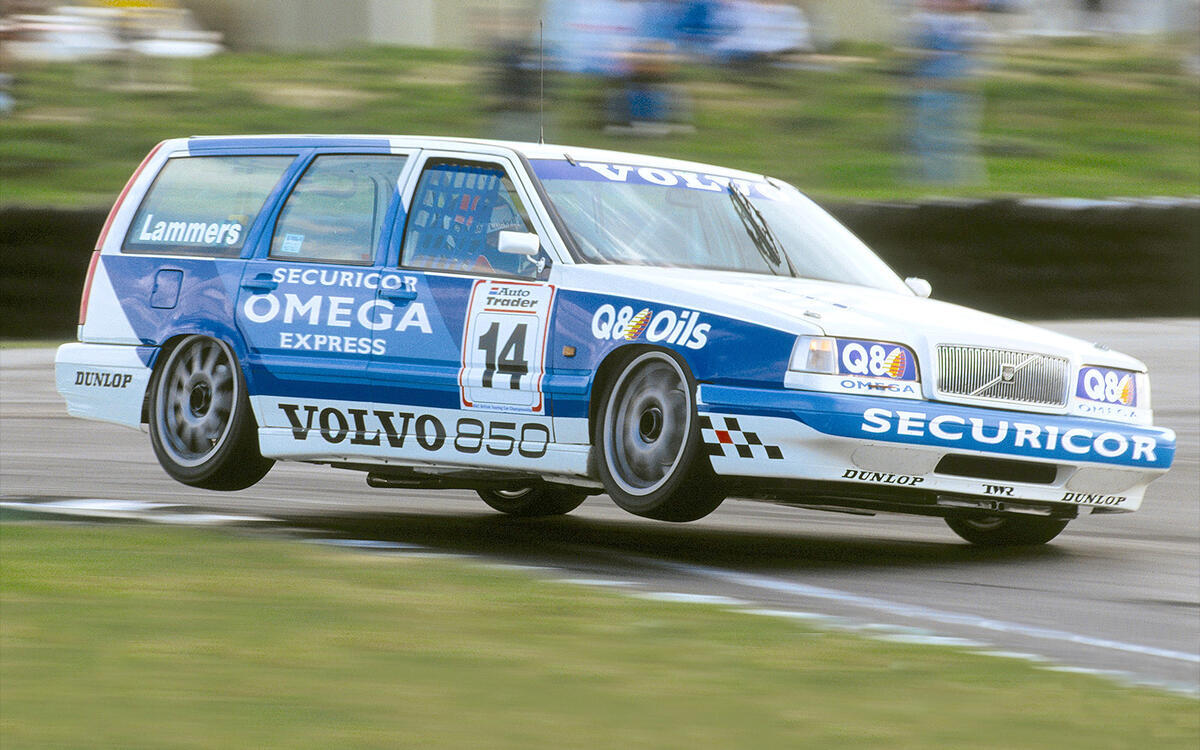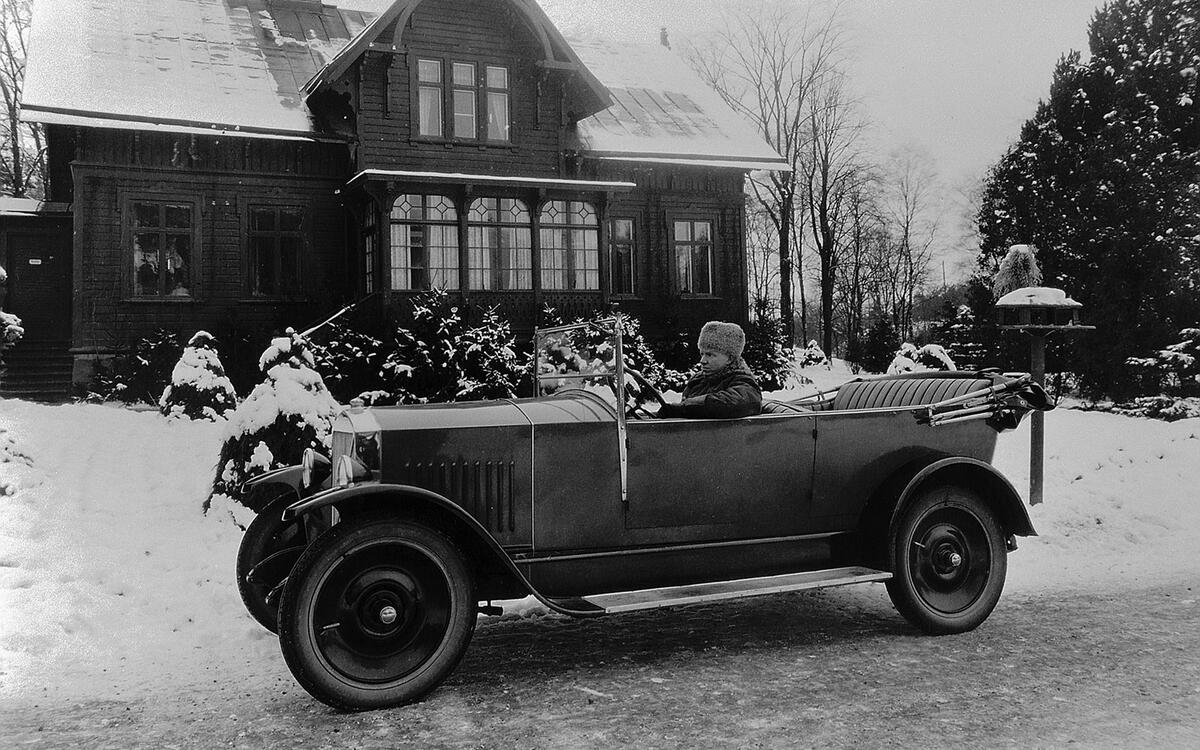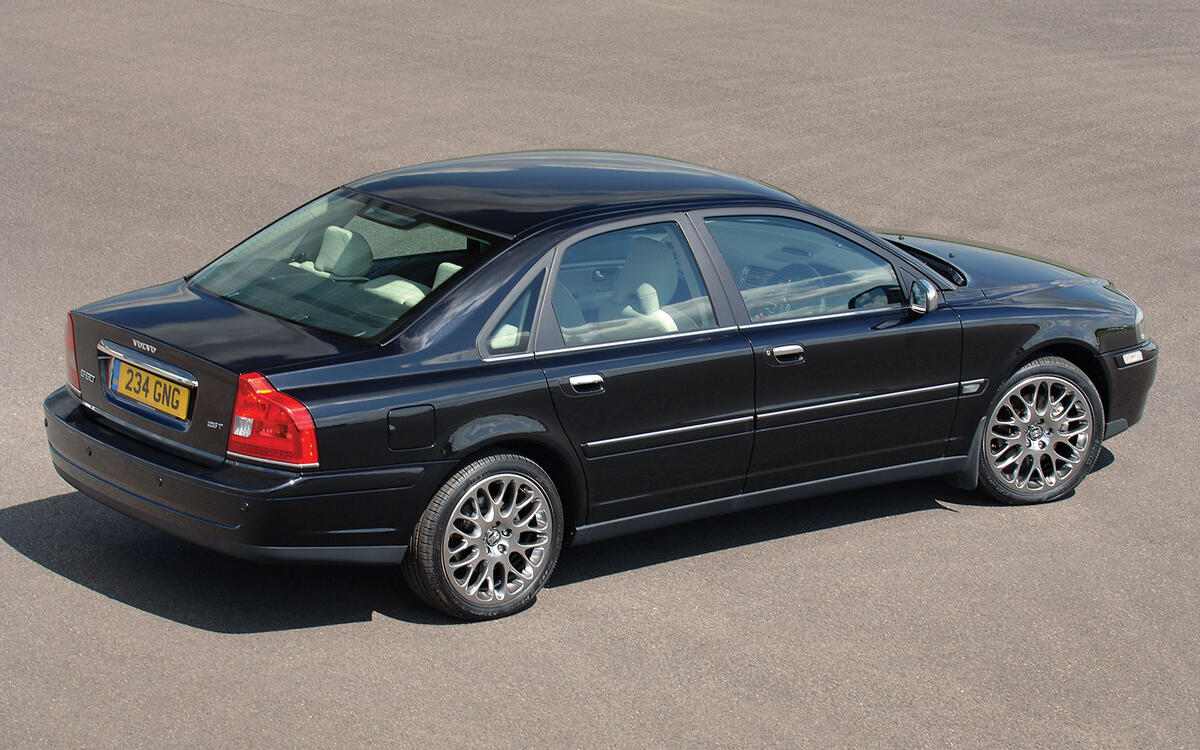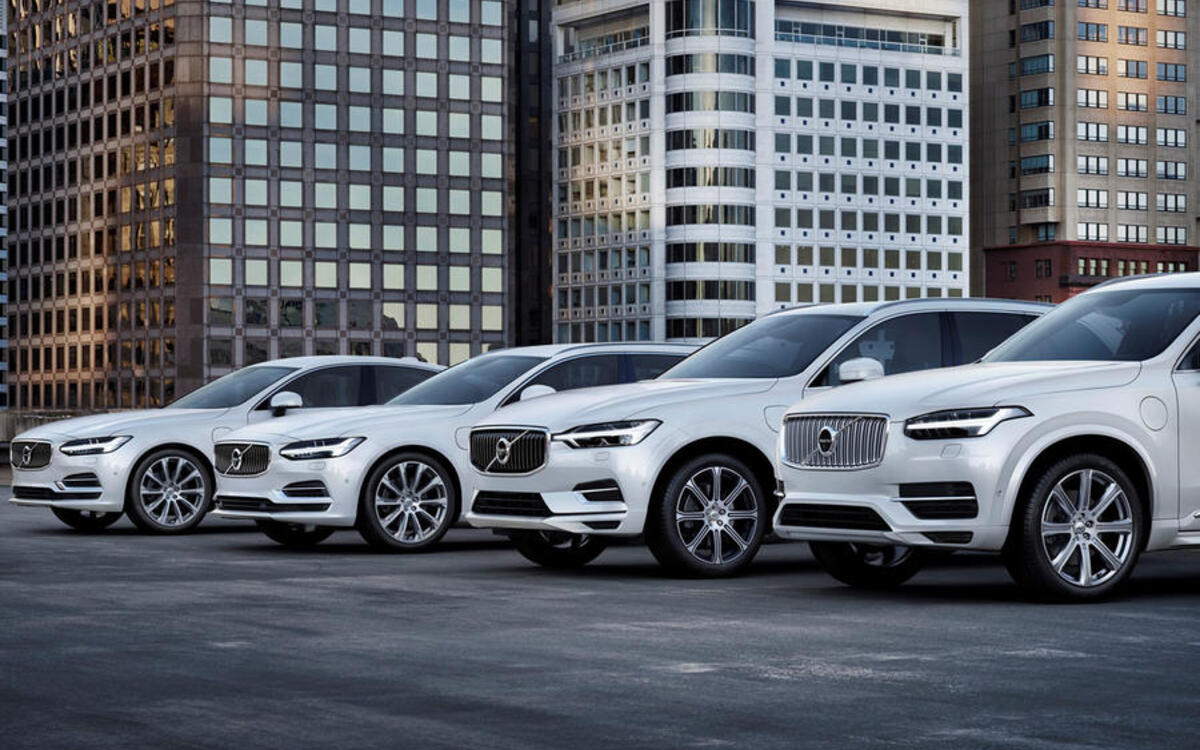 Slide of
Slide of
In 2017 Volvo quietly notched up 90 years of car making.
The company was set up by Assar Gabrielsson and Gustaf Larsson, both of whom worked for bearings manufacturer SKF.
The company bankrolled the early days of Volvo, which is why it took its name from the Latin for ‘I roll’. Now owned by Chinese company Geely, Volvo has gone from being a little bit left-field to a serious contender in the premium car arena. And just this week it's unveiled surely its most important model in years - the XC40 Recharge - the company's first purely electric powered model. It will have a single-charge range of 248 miles, and will go on sale in most markets in 2020. Time, then, to see how the model fits into the pantheon of Volvo's greatest cars.
Let’s see how the Volvo story began, and how its recent success occurred:
 Slide of
Slide of
OV4 (1927)
Volvo’s first car rolled out of the company’s Lundby factory on 14 April 1927. Things didn’t get off to a great start though; an incorrectly assembled rear axle meant the car set off in reverse. The 1,944cc engine produced 28bhp and was mated to a three-speed manual gearbox.
 Slide of
Slide of
PV651 (1929)
Volvos were never lightweight, even in the early days. Their four-cylinder engines struggled to haul them along which is why in 1929 the first six-cylinder model was launched. Snappily called the PV651, power (all 55bhp of it) came from a 3,010cc six-cylinder side-valve engine.
 Slide of
Slide of
PV36 (1935)
Volvo got radical in 1935 with the introduction of the PV36, nicknamed the Carioca after a popular dance of the period. The streamlined design arrived only a year after the similarly styled Chrysler Airflow and just like that car, the Carioca was a sales disaster.
 Slide of
Slide of
PV444 (1947)
Before the war Volvo had focused on large, luxurious cars but in the post-war era there was a shift towards smaller, more affordable models.
Leading the charge was the PV444, the first Volvo to be exported to the US, with the first cars landing there in spring 1956. An updated PV444 arrived in 1958 – imaginatively called the PV544 and featuring a one-piece windscreen in place of the PV444’s split screen.
 Slide of
Slide of
PV445 drophead (1949)
A chassis-only PV444 was offered from 1949 (sold as the PV445), for coachbuilders to use for whatever specials they might want to offer. As a result, companies such as Valbo and Ringborg built drophead PV444s, but only a handful were made.
 Slide of
Slide of
Duett (1953)
Estate cars were pretty much unheard of in the early 1950s. Some coachbuilt shooting brakes were available but manufacturers were still focusing on saloons. So the introduction of a Volvo estate was big news. Based on the PV445 platform, the Duett remained in production right through to 1969.
 Slide of
Slide of
P1900 (1954)
When Volvo boss Assar Gabrielsson visited the US in 1953 he saw how popular European sportscars had become. After a visit to the new Corvette factory where the glassfibre cars were built, his mind was made up – Volvo would produce its own plastic-bodied sportscar.
But production was halted after just 68 P1900s had been built as the car was poorly made and highly priced.
 Slide of
Slide of
Amazon (1956)
It was meant to replace the PV544 but instead the Amazon sold alongside it for a full decade. Launched as the Amason (later changed to Amazon), moped manufacturer Kriedler claimed Volvo had infringed its trademark so the name was used only in the domestic market; everywhere else the car was marketed as the 120 series and 220 series.
 Slide of
Slide of
P1800 (1961)
Best known for its starring role in TV show The Saint, only the earliest versions of this stylish coupé were known as the P1800. Later came the 1800S and 1800E, the latter getting fuel injection. The model’s swansong was a shooting brake called the 1800ES.
 Slide of
Slide of
140 series (1966)
Until now, Volvos had been curvy. But not any more; the 144 saloon and 145 estate ushered in a new era for Volvo that would see straight lines the order of the day.
Pioneering crumple zones, dual-circuit braking, a collapsible steering column and anti-whiplash headrests there were also rear seat belt mountings and a laminated windscreen. Rivals took years to catch up.
 Slide of
Slide of
VESC (1972)
Nobody could accuse Volvo of creating beautiful cars; even its concepts were boxy and uninviting. This one was called the VESC (Volvo Experimental Safety Car) and it was prescient, with its anti-lock brakes, airbags front and rear, pop-up head restraints and energy-absorbing bumpers.
 Slide of
Slide of
66 (1975)
Volvo started to eye up Daf in the late 1960s, but it wasn’t until 1975 that the former had a majority share in the latter. The result was the 66, an evolution of the Daf 55, offered in saloon or estate forms. Power came from a 1.3-litre engine driving the rear wheels via Daf’s famous continuously variable transmission dubbed Variomatic.
 Slide of
Slide of
343 (1976)
Intended to fill the gap between the 1.3-litre 66 and the 2.1-litre 240 series (which had replaced the 140 in 1974), the 343 had started out as a Daf design.
Initially offered only with a 1.4-litre Renault engine and a CVT, the 343 evolved over the years with bigger engines and better gearboxes. And thanks to the latter being mounted in the rear plus the adoption of rear-wheel drive, the 340 and 360 was actually rather fun to drive.
 Slide of
Slide of
LCP concept (1976)
As the name suggests, the Light Component Project was run in a bid to test lightweight materials such as magnesium, plastics and aluminium. Two were built, one powered by a 1.3-litre direct-injection three-cylinder turbodiesel engine and the other by a regular 1.4-litre turbodiesel.
 Slide of
Slide of
262C (1977)
Not one of Volvo’s finest moments, the 262C was the result of a collaboration with Bertone; it was designed in Sweden but assembled in Turin. Powered by a 2.7-litre V6, 6,622 examples of the 262C were built between 1977 and 1981.
 Slide of
Slide of
740 & 760 (1982)
Volvo designer Jan Wilsgaard started with 50 designs which were whittled down to 20, from which eight clay models were produced. Of these, two designs went to the full-size mock-up stage.
Despite all of this, the finished result was a design that drew almost universal criticism for its sharp edges and straight lines. But it was safe...
 Slide of
Slide of
780 (1985)
The 700-Series saloon and estate may have been very boxy but the 780 coupé redressed the balance somewhat. So it’s a shame that it was reserved for US and Italian markets only; the two-door was designed by Bertone. Between 1985 and 1990 just 8,518 examples of the 780 were built, with six-cylinder petrol or diesel engines.
 Slide of
Slide of
480ES (1987)
Picking up where the 1800ES had left off, the 480ES was a neatly styled shooting brake with pop-up headlights and a choice of Renault 1.7 or 2.0-litre engines, the former also coming in Turbo form.
A convertible was developed and shown, but failed to go into production – what did reach showrooms were hatchback and saloon 440/460 variants, which were utterly forgettable.
 Slide of
Slide of
850 (1992)
The 850 may have seemed like little more than a facelifted 740 but it was far more than that; it brought front-wheel drive to Volvo’s big-car range and it also adopted multi-link rear suspension.
The result was a car that was as enjoyable to drive as it was safe and luxurious, and in 250bhp T5R form it was a serious road-burner, and became an unlikely hero of the race car circuit.
 Slide of
Slide of
ECC (1992)
Looking very much like the first-generation S80 that went on sale in 1998, the brief for the Environmental Concept Car was to create a car which offered quality, safety, comfort and performance while also being as environmentally friendly as possible.
A gas turbine/electric hybrid powertrain provided ample performance with excellent economy.
 Slide of
Slide of
C70 coupé (1997)
Whereas the second-generation C70 that arrived in 2006 was a coupé-cabriolet, with the original edition you had to choose whether you wanted a coupé or a cabriolet. Stylish and genuinely fast in T5 form, the drop-top looked smart but had the structural integrity of an aged lettuce.
 Slide of
Slide of
S80 (1998)
The 940 and 960 took over from the 700-series in 1990 and was rebranded S70 and V70 in 1996. The S80 took over from these in 1998 but in saloon form only, as the V70 estate would come along in 2000.
Power came from a range of five or six-cylinder engines. In 1999 Ford bought Volvo’s car division; the truck-focused Volvo Corporation continues as in independent entity to this day. Ford platforms would increasingly make their way into Volvo’s cars, notably 2006’s EUCD platform that would underpin the XC/V70, S80, S/V60, and first XC60.
 Slide of
Slide of
V70 (2000)
There have been three generations of V70 so far and all of them have been much the same in terms of basic characteristics: safe, huge and ridiculously comfy. You can add fast to the mix for some versions too, which is why police forces across the UK have lapped up the V70 in huge numbers.
Once a stalwart of American campus trips, station wagons like the V70 have been eclipsed by SUVs and Volvo stopped selling the V70 in America in 2010, offering only the jacked-up XC70 variant.
 Slide of
Slide of
XC90 (2002)
When Volvo first dipped a toe in the SUV waters, little did it know just what a good move it would be. As soon as the XC90 was announced in 2002 big waiting lists built up and while demand settled after a while, the original seven-seater SUV remained in production right the way through to 2014 – although the first-generation car remains in production in China.
 Slide of
Slide of
C30 (2006)
For a company that puts safety and practicality before anything else, the C30 was an interesting diversion. Based on the contemporary Focus, the C30 looked neat and was fun to drive but was compromised on the usability front thanks to its tiny boot and just two cramped rear seats.
 Slide of
Slide of
V60 (2010)
The sporty estate for those who value style ahead of space, the V60 injected a healthy dose of appeal into the Volvo range when it made its debut in 2010. A costly diesel-electric hybrid edition arrived in 2012, and instantly sold out, prompting Volvo to increase production significantly.
 Slide of
Slide of
V40 (2012)
The original V40 was utterly forgettable. An estate version of the S40 that Volvo built in conjunction with Mitsubishi (the Carisma was closely related), it was stupendously dull.
Not so the second take on the model though, a Ford Focus-sized and (Focus-based) hatch which offers all of Volvo’s traditional virtues but in a smaller, more affordable package.
 Slide of
Slide of
XC90 (2014)
The Chinese firm Geely purchased Volvo from Ford in 2009. It launched a large-scale investment programme that resulted in a new flexible architecture for its models called Scalable Product Architecture (SPA).
The second-generation XC90 saw its first outing and gave the car a comfortable, confident large SUV. The car also featured interior quality and technology that firmly established the car as a premium player.
 Slide of
Slide of
V90 (2016)
The V70 was long-in-tooth but much admired and liked for its interior space. For the V70’s successor, the V90, Volvo opted to go for a more svelte approach, which might have upset Volvo purists but should help the model steal sales for the more design conscious buyer.
It’s available in the US on special order only; the jacked-up V90 Cross Country is however sold the normal way in that market.
 Slide of
Slide of
XC60 (2017)
The first-generation XC60 built on the success of the XC90 by offering much the same virtues but with just five seats in a smaller, more affordable package. The all-new XC60 took this a stage further with a suite of cutting-edge powertrains including a range-topping T8 edition with a turbocharged and supercharged 2.0-litre petrol engine backed up by an electric motor.
The market seems to like it - nearly 190,000 XC60s were sold in 2018.
 Slide of
Slide of
XC40 (2018)
The XC40 compact SUV was warmly welcomed in 2018; indeed, it was given the prestigious Car of the Year award by our sister publication What Car? Surfing the global wave for small SUVs, it’s proving a hot seller; Volvo estimates it will sell 150,000 XC40s in 2019.
 Slide of
Slide of
S60 (2018)
In 2018, Volvo opened its first factory in America. Located in Charleston, South Carolina, it will build the new S60 saloon and from 2021, the XC90 large SUV too. The S60 has a tough assignment, battling deeply entrenched rivals like the BMW 3 Series and Mercedes C Class, but it certainly offers something different.
 Slide of
Slide of
What’s next?
The V40 will end production in 2019, bringing to an end the last major vestige of the Ford era. In less than 10 years, Geely can realistically argue that it has at last joined the elite band of premium European car companies. In 2018, it sold 642,253 cars, breaking the 600,000 mark for the first time ever. It aspires to eventually sell over 800,000 cars per year.
Since the V40 won’t be immediately replaced, that target may not be attained in the short term. For the moment, we expect tweaks to the existing range and various facelifts. The remake of Volvo is an ongoing project, and the next major leap forward will be all-electric models.
 Slide of
Slide of
Volvo XC 40 Recharge
The XC40 Recharge was unveiled in October 2019 as Volvo's first full battery electric model, with the SUV featuring a 402bhp twin motor set-up and a claimed range of more than 248 miles.
The new EV will join the petrol engined and plug-in hybrid variants of the small SUV when it goes on sale in the UK late in 2020, with pricing expected to be close to £50,000.
The XC40 Recharge will be the first of five fully electric models the firm will launch in the next five years, with Volvo aiming for EVs to account for half of its global sales by 2025, the rest featuring a hybrid powertrain. Those five electric cars, along with the Swedish firm’s plug-in hybrid models, will carry the new Recharge branding.
As Volvo launches its first purely-electric powered car, the XC40 Recharge, let's look at the greatest models it's ever made
Advertisement








































































